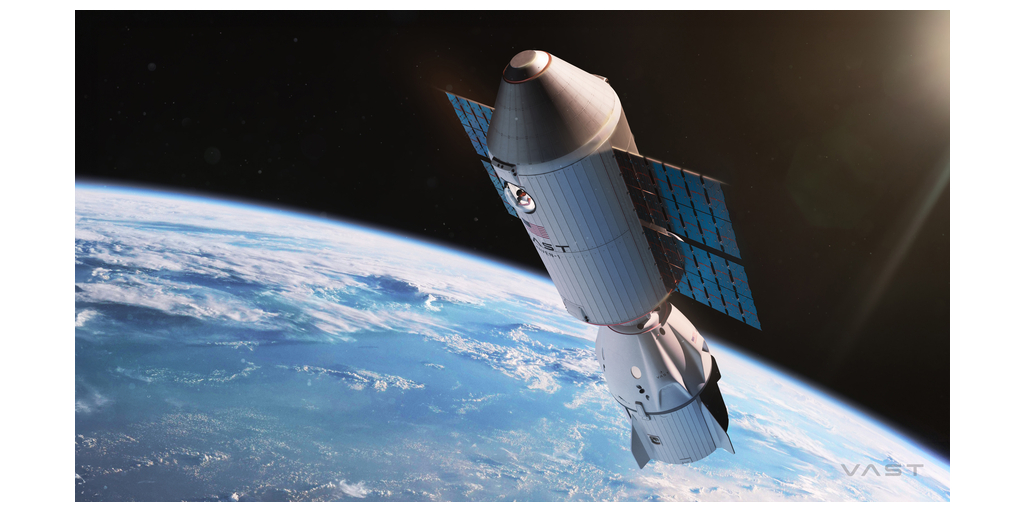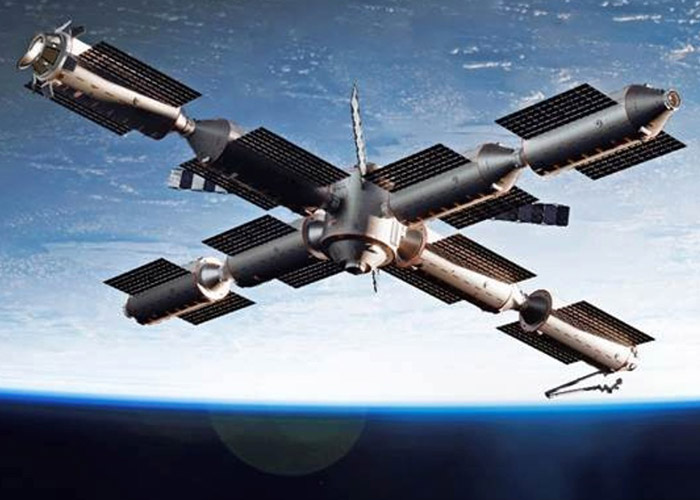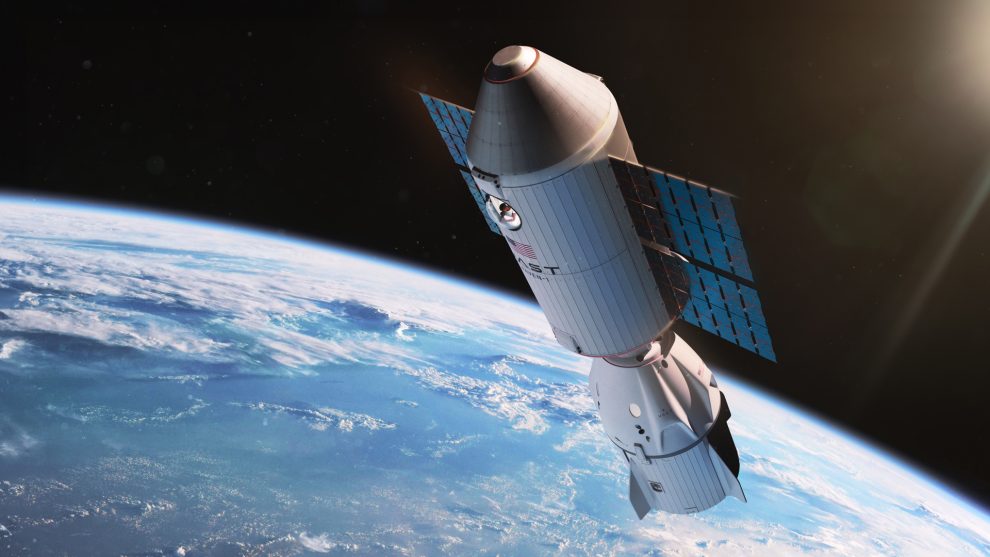Vast Space has pulled back the curtain on its revolutionary design for a commercial space station. This ambitious project, set to be proposed to NASA in the next phase of the agency’s program to develop successors to the International Space Station (ISS), represents a paradigm shift in how we conceptualize living and working in low Earth orbit (LEO). With its innovative approach to space habitation, Vast Space is not just reaching for the stars – it’s aiming to build a new home among them.
As the venerable International Space Station approaches the end of its operational life, expected sometime in the late 2020s or early 2030s, NASA has been actively seeking commercial partners to develop the next generation of orbital outposts. This transition from government-led to commercially operated space stations marks a significant milestone in the evolution of space exploration and utilization.
Dr. Elena Rodriguez, a space policy expert at the University of California, Berkeley, explains the significance of this shift: “We’re witnessing a pivotal moment in space history. The commercialization of low Earth orbit will not only reduce costs but also accelerate innovation and open up new possibilities for scientific research, manufacturing, and even space tourism.”

Founded in 2021, Vast Space may be a relative newcomer to the aerospace industry, but it’s backed by some serious credentials. The company was established by Jed McCaleb, a tech entrepreneur known for his work in cryptocurrency and blockchain technology. McCaleb’s vision for Vast Space is nothing short of revolutionary – to create large-scale habitats that will enable humanity to live and work in space.
With a team composed of aerospace veterans and innovative engineers, Vast Space has been working behind the scenes to develop a space station design that could leapfrog current concepts of orbital habitation.
The unveiling of Vast Space’s station design has sent ripples of excitement through the space community. Let’s delve into the key features that set this proposal apart:
Perhaps the most groundbreaking aspect of Vast’s design is its incorporation of artificial gravity. Unlike the microgravity environment of the ISS, Vast’s station would utilize a rotating ring structure to simulate Earth-like gravity.
Dr. Sarah Chen, an aerospace engineer specializing in space habitats, explains the significance: “Artificial gravity is a game-changer for long-term space habitation. It could mitigate many of the health issues astronauts face in microgravity, such as muscle atrophy and bone density loss. This could pave the way for extended stays in space and make it more accessible to a broader range of people.”
The rotating ring would be approximately 100 meters in diameter, rotating at a speed carefully calculated to provide about 0.5g of artificial gravity – enough to provide significant health benefits while still allowing for unique microgravity experiments in the station’s central hub.
Vast’s design incorporates advanced expandable habitat technology, similar to but more advanced than the Bigelow Expandable Activity Module (BEAM) currently attached to the ISS. These modules would be launched in a compact form and then inflated once in orbit, allowing for much larger living and working spaces than traditional rigid modules.
“The use of expandable modules is a brilliant solution to the payload size limitations of current launch vehicles,” notes Dr. James Wong, a materials scientist involved in space habitat research. “It allows for a much larger habitable volume while significantly reducing launch costs.”
The station would feature a cutting-edge Environmental Control and Life Support System (ECLSS) that goes beyond current technologies. Vast claims their system would achieve near-complete water and air recycling, significantly reducing the need for resupply missions.

Additionally, the design incorporates a bioregenerative life support component, using plants to assist in air revitalization and potentially even food production. This could be crucial for future long-duration missions or as a stepping stone to self-sustaining colonies on the Moon or Mars.
Vast’s station is designed with modularity in mind, allowing for easy expansion and reconfiguration as needs change over time. This flexibility could accommodate a growing number of inhabitants, new research facilities, or even commercial modules for space manufacturing and tourism.
The station would be powered by a combination of next-generation solar arrays and advanced battery storage systems. Vast claims their power system would provide significantly more electricity than the ISS, enabling energy-intensive experiments and manufacturing processes.
Recognizing the challenges posed by cosmic radiation, Vast’s design incorporates advanced shielding technologies. This includes both passive shielding materials integrated into the station’s structure and active shielding systems that use electromagnetic fields to deflect harmful particles.
Vast Space envisions its station as a versatile platform that can serve a wide range of purposes:
The combination of artificial gravity and microgravity environments on the same station opens up unique research opportunities. Scientists could study the effects of varying gravity levels on biological processes, materials behavior, and fluid dynamics.
Dr. Maria Gonzalez, a biologist specializing in space-based research, is excited about the possibilities: “Having both microgravity and artificial gravity environments in the same facility would be invaluable. We could conduct comparative studies that are simply not possible with current space stations.”
The ample power supply and large pressurized volume make Vast’s station an ideal platform for in-space manufacturing. Industries ranging from pharmaceuticals to advanced materials could benefit from the unique conditions of microgravity production.
With its artificial gravity and larger living spaces, Vast’s station could make extended stays in space more comfortable and accessible to a broader range of people, potentially opening up new avenues for space tourism.
The station could serve as a training ground for astronauts preparing for long-duration missions to the Moon or Mars, allowing them to acclimate to artificial gravity environments similar to what they might experience on future spacecraft.
While Vast’s proposal has generated significant excitement, it’s not without its challenges and critics:
Some experts question whether the technologies proposed, particularly the large-scale artificial gravity system, can be reliably implemented within the projected timeframe and budget.
Dr. Robert Chang, a space systems engineer not affiliated with Vast, voices his concerns: “While the concepts are promising, moving from design to a fully operational rotating space station is a massive engineering challenge. We’ll need to see more detailed plans and prototypes before we can fully assess the viability of this proposal.”
The ambitious scale of Vast’s proposal raises questions about funding. While exact figures haven’t been disclosed, industry analysts estimate the cost could run into tens of billions of dollars.
The innovative nature of Vast’s design may require new regulatory frameworks. Issues such as safety standards for artificial gravity environments and liability in commercial space stations are still largely uncharted territories.
Vast isn’t alone in the race to build the next generation of space stations. Established aerospace giants like Boeing and Lockheed Martin, as well as newer players like Axiom Space, are all vying for NASA’s attention and funding.
NASA has expressed enthusiasm for the innovative proposals coming from the commercial sector. Thomas Zurbuchen, NASA’s former associate administrator for science, stated in a recent interview: “The creativity and ambition we’re seeing from commercial partners like Vast Space is exactly what we hoped to stimulate with this program. These proposals are pushing the boundaries of what we thought possible in low Earth orbit.
However, NASA is remaining neutral and will evaluate all proposals based on technical feasibility, cost-effectiveness, and alignment with the agency’s long-term goals for LEO commercialization.
As Vast Space prepares to submit its formal proposal to NASA, the company is already looking ahead to the next steps. They’ve announced plans for a small-scale prototype to demonstrate key technologies, particularly the artificial gravity system.
Jed McCaleb, founder of Vast Space, shared his vision for the future: “We’re not just building a replacement for the ISS; we’re creating the foundation for humanity’s future in space. Our station will be a stepping stone to the stars, enabling research, commerce, and human exploration on an unprecedented scale.”
The unveiling of Vast’s space station design marks a significant moment in the ongoing commercialization of space. If successful, this project could:
1. Dramatically increase the number of people living and working in space
2. Enable new fields of scientific research and commercial activities
3. Serve as a testbed for technologies needed for long-duration space missions
4. Potentially lower the costs of space access and utilization
Dr. Lisa Patel, a futurist specializing in space technology, offers her perspective: “What Vast Space is proposing could be the key to unlocking the real potential of low Earth orbit. If they can deliver on even half of what they’re promising, it would represent a quantum leap in our capabilities in space.
The unveiling of Vast Space’s revolutionary space station design marks the beginning of a new chapter in humanity’s exploration and utilization of space. With its artificial gravity, expandable modules, and focus on commercial applications, this proposal challenges our very conception of what a space station can be.
As NASA moves forward with its commercial LEO development program, proposals like Vast’s are pushing the boundaries of innovation and ambition. Whether or not this particular design is selected, it’s clear that the future of space habitation will look very different from the cramped, microgravity environments we’ve become accustomed to seeing.
The coming years will be crucial as Vast Space and its competitors refine their proposals, demonstrate key technologies, and vie for NASA’s support. Whatever the outcome, one thing is certain: the dream of large-scale human presence in space is closer to reality than ever before.
As we stand on the brink of this new era in space exploration, the unveiling of Vast’s space station design serves as a powerful reminder of human ingenuity and our unrelenting drive to push beyond the frontiers of the possible. In the vast expanse of space, we may yet find not just new scientific understanding or commercial opportunities, but a new home for humanity among the stars.
















Add Comment